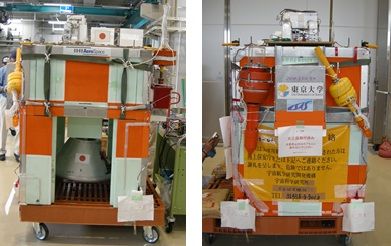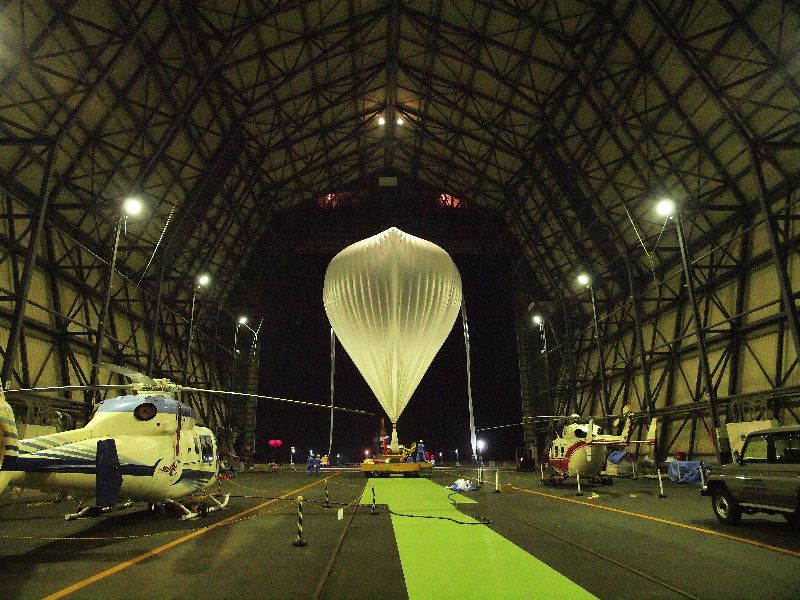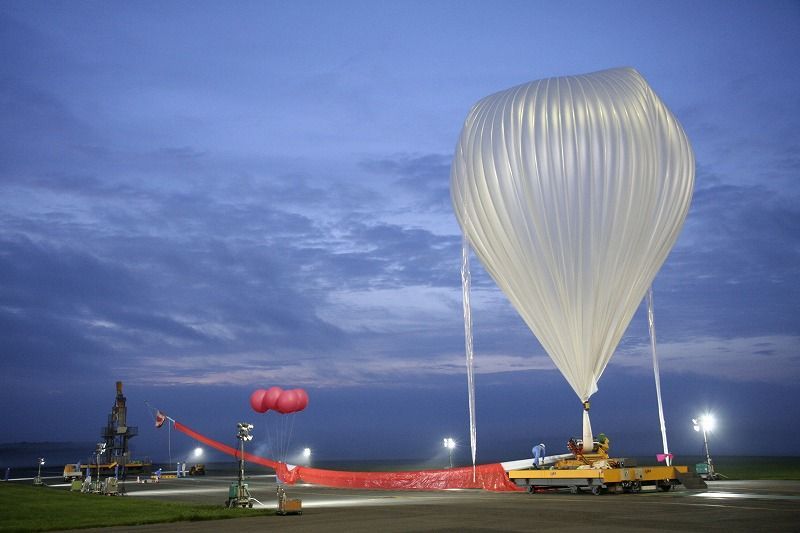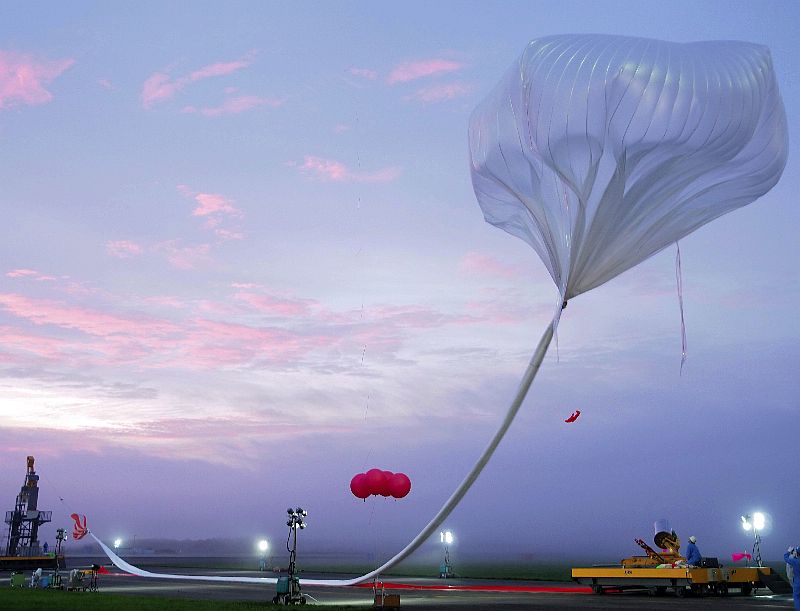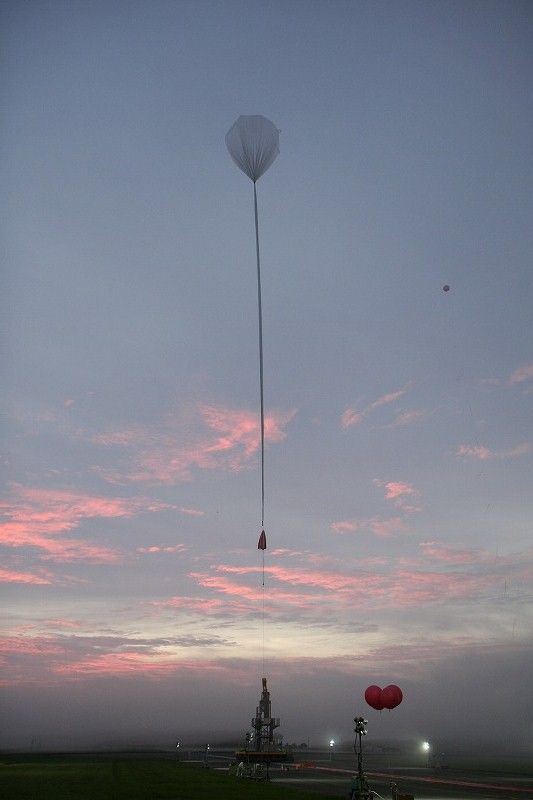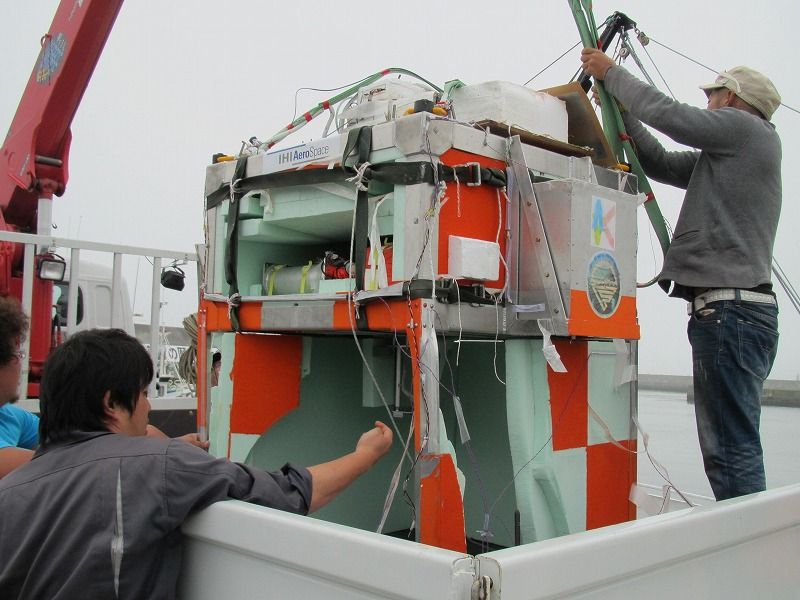Purpose of the flight and payload description
The µ-LRS or Micro-Laboratory Reentry System is a small reentry capsule shaped as the infamous Apollo Command Module with the capability of allowing guidance during the reentry phase. The capsule is a cooperative effort between the University of Tokyo, IHI Aerospace Co., Ltd., the Kyushu Institute of Technology and lntelligent Space Systems Laboratory (ISSL).
The capsule which we can see in the image at left attached to the balloon gondola, has reaction control system (RCS) thrusters inside to control its trajectory towards a targeted parachute deployment point with a teorethical accuracy of within 1 kilometer, to secure easier retrieval after the reentry, and help to reduce retrieval cost dramatically.
For the full development of this accurate guidance, the acquision of capsule's aerodynamic characteristics is indispensable. According to the past reports mainly from NASA's experiments, Apollo's command module type capsules have a dynamic instability during transonic and subsonic phase, so an essential technical issue is how to supress those instabilities. In order to study these characteristics and to test the feasibility of control, a free-fall mission was performed in 2011 using an ISAS/JAXA scientific balloon.
Details of the balloon flight
Balloon launched on: 8/30/2011 at 4:40 jst
Launch site: Multipurpose Aviation Research Field, Taiki-Cho, Hokkaido, Japan
Balloon launched by: Institute of Space and Astronautical Science (ISAS) / Japan Aerospace Exploration Agency (JAXA)
Balloon manufacturer/size/composition: Zero Pressure Balloon model B100 100.000 m3
Flight identification number: B11-04
End of flight (L for landing time, W for last contact, otherwise termination time): 8/30/2011 at 7:15
Balloon flight duration (F: time at float only, otherwise total flight time in d:days / h:hours or m:minutes - ): 3 h 45 m
Landing site: In the Pacific Ocean, 30 km SE of Taiki, Hokkaido, Japan
The balloon was launched by dynamic method at 4:40 am Japan Standard Time (JST) on August 30, 2011 from the Taiki Aerospace Experiment Station. The balloon with a fully inflated volume of 100,000 m3 ascended at a speed of approximately 300 m/min. Two hours and 20 minutes after the launch, the Apollo-type capsule test sample was dropped from the balloon at an altitude of 37 km over the Pacific Ocean, about 20 km south-southeast of Taiki. After reaching transonic speed, the parachute was opened and the capsule descended to the sea. At 7:15, the balloon and control equipment were separated by radio-command, and slowly descended into the sea about 30 km southeast of Taiki being recovered by a ship by 8:25.
The objective of the experiment was to collect basic data on the dynamic instability behavior of an Apollo-type recovery vehicle in the transonic range, and to control it with a reaction control jet. The free-fall mission from the balloon was carried out as scheduled, during which was obtained important data related to the attitude and motion of the aircraft. The study will serve to deepen the understanding of attitude control during dynamic instability as well as understanding the basic behavior of this kind of reentry vehicles.
External references
- Details of the mission (in Japanese) ISAS / JAXA website
- Free Fall Experiment of µ-LRS Capsule using Scientific Balloon JAXA research and development report JAXA-RR-11-008, 47-60, 2012-03 (In Japanese)
10330If you consider this website interesting or useful, you can help me to keep it up and running with a small donation to cover the operational costs. Just the equivalent of the price of a cup of coffee helps a lot.

